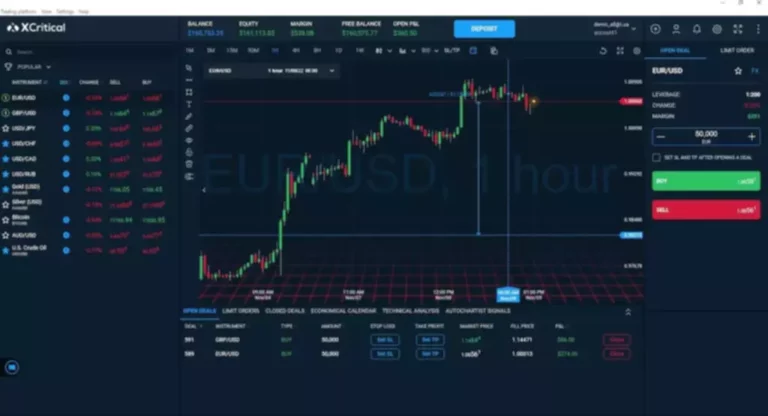Content
One option is to send the order to payment for order flow an exchange, where it will be matched with another buyer or seller. Another option is to send the order to a market maker, who will execute the trade themselves. If the broker chooses to send the order to a market maker, they will receive a fee in exchange for the order. Overall, Payment for Order Flow is a complex and controversial subject that requires careful consideration from all parties involved. While the practice can lead to better prices and execution quality for investors, it also creates conflicts of interest and lacks transparency.
How Wall Street Banks Cheat Their Clients
- Track your trades and compare the prices you received to other market data to ensure that your broker is providing you with fast and reliable execution of your orders.
- Most relevant here are the rules designed to ensure that investors receive the best price execution for their orders by requiring brokers to route orders to achieve the best possible price.
- If the bank mistakenly transfers $100,000 instead of $10,000, they would be liable for the error and would need to rectify the situation promptly.
- In this section, we will explore the impact of PFOF on retail investors, examining its potential benefits and drawbacks from different points of view.
- While the drawee is generally responsible for executing valid payment orders, they are not liable for unauthorized payment orders.
- C. Invest in robust technology solutions that can automate compliance checks, enhance transaction monitoring, and ensure data security.
Overall, payment for order flow is a complex issue that has both benefits and drawbacks. https://www.xcritical.com/ It is important for investors to understand how it works and how it may impact their trades. Payment for order flow can be a significant revenue source for brokerage firms. Some firms can earn millions of dollars per quarter from payment for order flow arrangements. Much of the recent scrutiny is based on a misunderstanding of the underlying market and the complexity of the forces driving it. How does an order given to a broker like Robinhood or Schwab or ETrade become a trade?
So what is Payment For Order Flow?

For a very volatile security with a quote that moves all over the place, spreads can be VERY large. As long as the market maker is grabbing buys and sells equally, it should earn the spread, which represents a profit. Most market makers therefore have risk models around how imbalanced they allow their positions to Proof of personhood be. Options.Options trading entails significant risk and is not suitable for all investors. Options investors can rapidly lose the value of their investment in a short period of time and incur permanent loss by expiration date. Investors must read and understand the Characteristics and Risks of Standardized Options before considering any options transaction.
How Upstream’s Signing Key Empowers Investors with Secure Asset Management on Your Phone
All investments involve the risk of loss and the past performance of a security or a financial product does not guarantee future results or returns. In the Good Model, market makers can get a good deal on a stock and it ends up being a good deal for all involved parties. But with the Bad Model, the market makers dont get investors the best deal but get a somewhat okay deal.

This could result in poorer execution prices for traders or even market manipulation if the market maker or HFT firm has the ability to influence prices. One of the main advantages of POF is that it can lead to better execution prices for traders. Market makers and HFT firms are often able to offer tighter spreads and better prices than exchanges due to their access to more liquidity and faster technology.
Since most retail brokers sell their orders to market makers, nearly 50% of orders are executed away from the exchanges. As a result, liquidity at the exchanges has diminished and it is likely that the NBBO is now wider than it would be if all orders went to the exchanges. So although market makers do give a slight improvement over the NBBO, if they did not divert orders from the exchanges it is likely the NBBO would be narrower. In other words, after the market maker takes its cut of the spread, the broker gets to “slice the pie”. As we discussed in the previous section, payment for order flow has been a controversial practice for a while now.
Then, the legal limit for fractional shares dropped from an eighth of a dollar to a sixteenth in 1997, down to decimals in 2001, and the practice became less common. It was at this time that some believe Madoff looked for other ways to make money. Once proprietary to floor traders in Wall Street, live stock prices were suddenly available to competitors, retail traders, and firms like Bernard Madoff Investment Securities. When a payment order is received by the drawee, they have certain obligations that must be fulfilled to ensure a smooth transaction. The drawee, typically a bank or financial institution, plays a crucial role in executing the payment order and ensuring that the funds are transferred to the intended recipient.
Since market makers are willing to compensate brokers, it means customers don’t have to pay them. That allows smaller brokerages to compete with big brokerages that may have other means of generating revenue from customers. Payment for order flow is a practice where brokerages receive compensation for directing their customers’ trades to particular market makers or trading venues.
Changes in the complexity of trades involving equity, options, and cryptocurrency have come about as exchanges and electronic communication networks have proliferated. Market makers are entities, typically large financial firms, that provide liquidity to the financial markets by buying and selling securities. The report provides transparency in this area, allowing investors to understand how their orders are routed and executed, and to identify any potential conflicts of interest. Broker-dealers must disclose the nature of any compensation received in return for routing orders, as well as the overall process they use for order routing decisions. By mandating this disclosure, the reports mandated by 606(a) aim to enhance the integrity of the market and protect investor interests.
The rules also required brokers to periodically review their payment for order flow arrangements to ensure that they continued to provide best execution. Overall, algorithmic trading has numerous advantages when it comes to Payment of Order Flow. The Securities and Exchange Commission (SEC) has implemented regulations to address some of the concerns regarding PFOF.
In this section, we will provide a detailed analysis of Payment for Order Flow. One of the biggest risks of payment for order flow is that it can create conflicts of interest. Brokers may be incentivized to send orders to specific market makers or trading firms, even if these aren’t the best options for their clients. For example, a broker may send orders to a particular market maker because they offer higher compensation, even if the market maker doesn’t provide the best execution quality. This can result in traders receiving worse execution prices than they would have if their orders had been sent to other market makers.
Ever since the retail trading stock blow-up of Gamestop and AMC early this year, Robinhood and feeless stock trading have been the talk of the town. While the drawee is generally responsible for executing valid payment orders, they are not liable for unauthorized payment orders. If a payment order is fraudulently initiated or does not have proper authorization from the payer, the drawee cannot be held responsible for any resulting losses. For instance, if a hacker gains unauthorized access to a payer’s account and initiates a payment order, the drawee would not be liable for any funds transferred as a result.
As the regulatory landscape continues to evolve, it will be interesting to see how broker-dealers and market participants respond to these challenges. Another challenge of payment for order flow is that it can make it difficult for traders to get the best price for their orders. Market makers and trading firms that receive order flow may use this information to their advantage, trading ahead of client orders or taking other actions that result in the trader receiving a less favorable price.
Additionally, market makers are often able to execute trades more quickly and efficiently than exchanges, which can lead to faster execution times and fewer missed opportunities. For example, brokers are required to disclose their payment for order flow practices to their customers and to provide information on the execution quality of the market makers to whom they direct orders. These regulations are designed to ensure that investors have access to the information they need to make informed decisions about their trades. On the one hand, PFOF allows broker-dealers to offer commission-free trading to customers, which can be attractive to investors who are looking to keep trading costs low. On the other hand, PFOF creates conflicts of interest, as broker-dealers may be incentivized to route orders to market makers that offer the highest payment, rather than those that offer the best execution quality. It is an arrangement between a broker-dealer and market maker where the market maker pays the broker-dealer for routing its clients’ orders to them.
Regulators have implemented rules to ensure transparency and best execution for clients. PFOF is a complex and controversial practice that has both benefits and drawbacks for retail investors. While it can help reduce trading costs, it also creates conflicts of interest and can have a negative impact on market quality. As the regulatory landscape continues to evolve, it is important for investors to be aware of the potential risks and benefits of PFOF and to make informed decisions about their investments. It creates a conflict of interest for brokers and might result in worse execution prices for investors. When you tell your brokerage you want to buy or sell some stock, by default, you are allowing the brokerage to decide how to execute your trades.
